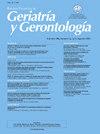估计老年患者身高的3种预测方法的有效性
Q3 Medicine
引用次数: 0
摘要
在日常临床实践中,我们比较经常会遇到用常规方法无法测量老年患者身高的情况。对于这些病例,已经开发出预测方法,通过测量身体部分来估计患者的身高。本文的目的是确定估计老年患者实际身高的最佳方法。材料和方法对130名65岁以上的参与者进行了一项横断面研究,这些参与者被安置在一家社会保健中心。采用三种估计方法计算每位研究参与者的身高,然后将结果与患者的实际身高进行比较。计算三种方法的相关系数(R)、平均绝对误差(MAE)和均方误差(MSE)。结果与讨论尺骨测量高度估算法的R = 0.97, MAE = 0.0386, MSE = 0.0019; Chumlea膝跟高度公式的R = 0.94, MAE = 0.0300, MSE = 0.0013; Arango和Zamora膝踝高度公式的R = 0.9, MAE = 0.0353, MSE = 0.0018。结论Chumlea公式具有良好的相关系数(R = 0.94)和最小的误差,是无法进行常规身高测量的老年患者身高估计的最佳方法。本文章由计算机程序翻译,如有差异,请以英文原文为准。
Validez de 3 métodos predictivos para estimar la talla en pacientes de edad avanzada
Introduction
In daily clinical practice, we relatively often encounter situations in which it is not possible to measure the height of elderly patients in a conventional way. For these cases, predictive methods have been developed to estimate the height of patients by measuring body segments. The aim of this paper is to determine the best method for estimating the actual height of elderly patients.
Material and methods
A cross-sectional study was carried out with 130 participants over 65 years of age institutionalised in a socio-health centre. Height was calculated using three estimation methods for each study participant and the results were then compared with the actual height of the patients. Correlation coefficient (R), mean absolute error (MAE) and mean square error (MSE) were calculated for each of the three methods.
Results and discussion
The method ‘height estimation from ulnar measurement’ had an R = 0.97 with an MAE = 0.0386 and an MSE = 0.0019, the ‘knee-heel height formula of Chumlea’ had an R = 0.94 with an MAE = 0.0300 and an MSE = 0.0013 and finally, the ‘knee-malleolus formula of Arango and Zamora’ had an R = 0.9 with an MAE = 0.0353 and an MSE = 0.0018.
Conclusions
The Chumlea formula is considered the best method for estimating height in elderly patients in whom height cannot be measured conventionally, as it has a very good correlation coefficient (R = 0.94) and the lowest deviation of the results.
求助全文
通过发布文献求助,成功后即可免费获取论文全文。
去求助
来源期刊

Revista Espanola de Geriatria y Gerontologia
Medicine-Medicine (miscellaneous)
CiteScore
1.90
自引率
0.00%
发文量
62
审稿时长
85 days
期刊介绍:
Una revista de gran prestigio por sus artículos originales de investigación y revisiones. Permite cubrir todas las áreas de la medicina pero siempre desde la atención al paciente anciano, y está presente en los más reconocidos índices internacionales.
 求助内容:
求助内容: 应助结果提醒方式:
应助结果提醒方式:


